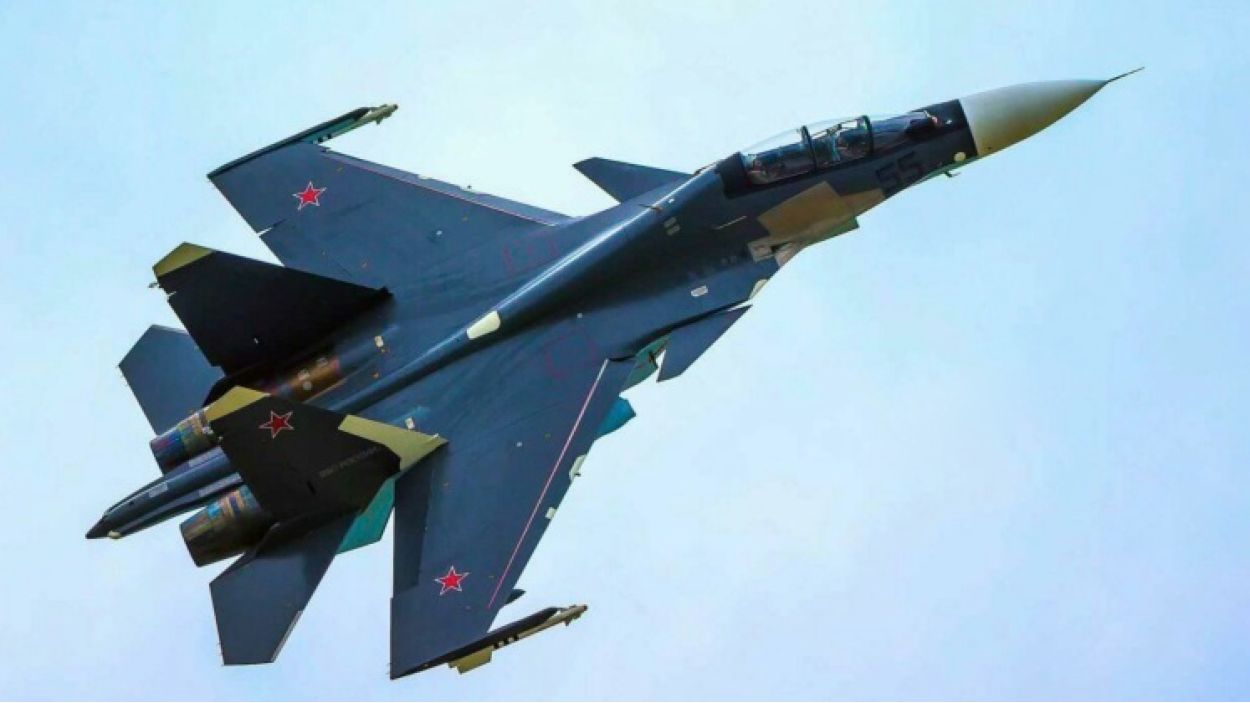According to the chief designer of the Su-30 program, Russia’s air capabilities with the Su-30SM2 fighter jet have advanced significantly. It has nearly twice the detection range of the previous Su-30SM model.
Oleg Pankov, Chief Designer of the Su-30 program, detailed the upgrades in an interview with Zvezda TV channel, emphasizing the aircraft’s enhanced radar and new weapons system.
Pankov highlighted that the Su-30SM2 was now equipped with integrated long-range weapons, utilizing almost every advanced weapon in Russia’s arsenal. “We have almost doubled the detection range compared to the Su-30SM, both for ground and air targets,” Pankov said.
The upgraded Su-30SM2’s new radar and weapon systems enable Russian pilots to effectively counter advanced air defense systems, such as the American Patriot system.
Pankov noted a recent demonstration of the aircraft’s capabilities, where one military unit successfully targeted a Patriot system just three days after receiving the updated fighter jet.
Footage of a low drag concrete-piercing bomb test.
(BETAB-500ShP or ..?) pic.twitter.com/7gh8pcUg0i— Massimo Frantarelli (@MrFrantarelli) July 6, 2024
Zvezda TV channel also showcased rare footage of tests involving concrete-piercing bombs dropped from the Su-30SM2. These bombs penetrate the ground before detonating, demonstrating the aircraft’s advanced precision strike capabilities.
The Russian military received its first batch of Su-30SM2 heavyweight fighters in late 2022. At the time, Vijainder K Thakur, an Indian Air Force veteran and an expert on the Russian defense industry, noted that the modernized variant, initially referred to as Su-30SMD and now designated Su-30SM2, incorporates operational lessons learned by the Russian Air Force during its air campaign in Syria.
Thakur mentioned that the Su-30SM2 aimed to merge the Su-30 family with the Su-35 series to minimize logistics and maintenance overheads.
He mentioned that the Su-30SM2 could deploy a full range of contemporary and future high-precision weapons, air-to-air and air-to-surface, including KAB-250 glide bombs and X-59MK2 air-to-surface missiles.
These upgrades reflect Russia’s ongoing efforts to enhance its aerial combat capabilities and maintain its edge in modern warfare. With its advanced radar and weaponry, the Su-30SM2 represents a significant leap forward for the Russian Air Force.
Su-30 To Be Equipped With New Engines
The chief designer of the Su-30 program said the Su-30 family of fighters will receive new engines similar to those installed on the Su-35 and Su-57 aircraft by next year.
The upgrades will enhance the aircraft’s climb rate, turning radius, and engine lifespan. The serial production of these new engines is expected to start next year.
One Su-30 equipped with these new engines is currently being tested. At the same time, the Su-30SM2 variant has already been outfitted with advanced engines.
The new engine, the AL-41F-S1, represents a substantial upgrade over the Su-30’s AL-31FP power plant. It offers a 16% increase in maximum thrust, reaching 14,500 kgf, and provides double the service life — 4,000 hours — while maintaining the same weight and dimensions as its predecessor.
The AL-41F-S1 engine also enhances electrical power generation, enabling the integration of more powerful radar and electronic warfare systems on the Su-30SM2. This variant’s upgraded Irbis radar further extends the detection range for both air and ground targets.

In related news, Russian media also claimed that Su-30 fighter pilots had developed specialized combat tactics to counter the F-16 fighter jet, which Western countries are expected to supply to Ukraine.
Russian pilots believe the F-16 will not pose a significant threat in combat scenarios. Russian pilots have studied the F-16’s aerodynamic characteristics thoroughly. They have not changed and remain consistent with the single-engine design.
“They will appear, and that’s fine. There will be a new goal; what’s the difference? We are even, probably, waiting for them to appear, “said the navigator of the Su-30SM aircraft.
Russian pilots are confident in their ability to engage the F-16 in close air combat, where they believe they can exploit the aircraft’s weaknesses and gain an advantage.
“By and large, its aerodynamic characteristics have not changed. It is the same single-engine aircraft. We know his strengths and weaknesses. And when we meet him (the F-16) in close air combat, we will drive him into the conditions in which we are princes, and he is nobody,” said the deputy commander of the special fighter group.
Both novice and experienced Russian pilots consistently engage in training sessions to prepare for combat situations, including potential encounters with American aircraft.
The deputy commander emphasized that while the pilots are aware of the potential for deceptive tactics and ambushes from F-16s, they are confident that their aircraft surpasses the F-16 in terms of maneuverability, weaponry, and targeting systems.
The advanced systems on their aircraft, combined with extensive preparation and tactical development, ensure that they are well-prepared for any potential engagement with F-16s.
- Contact the author at ashishmichel(at)gmail.com
- Follow EurAsian Times on Google News




